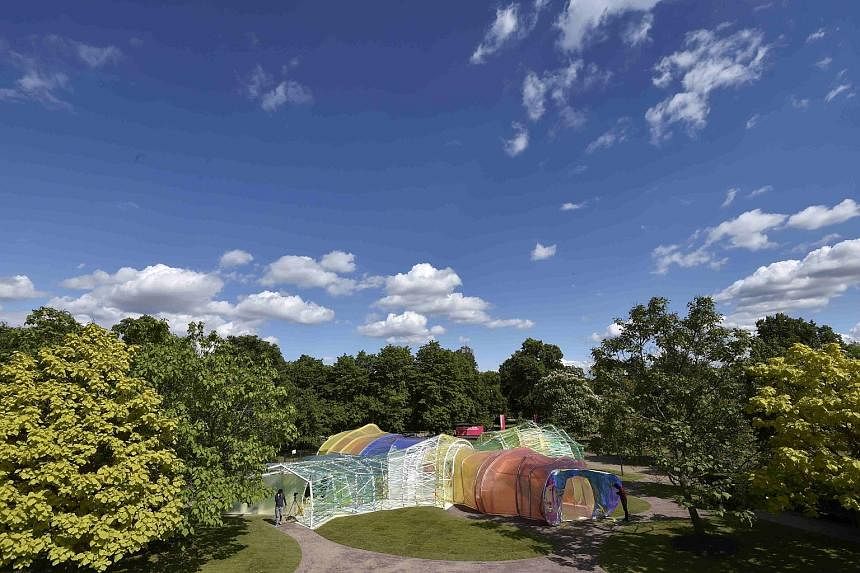Apsychedelic labyrinth has landed in London's Kensington Gardens this summer, courtesy of Spanish architects and husband-and-wife team Jose Selgas and Lucia Cano, who are better known as SelgasCano.
SelgasCano is an amalgamation of the names of the couple, both 50.
Every summer since 2000, a temporary pavilion is installed on the front lawn of the Serpentine Gallery in Kensington Gardens.
The structure - open to the public for free for more than three months - is one of the world's top architectural commissions in terms of public exposure, with more than 300,000 visitors every year.
The pavilion opened to the public on Thursday and will stand till Oct 18.
The pavilion series plays host to the contemporary art gallery's annual fund-raising party and gives an internationally recognised architecture firm the chance to show its first work in Britain.
In line with its aesthetic for playful designs and the bold use of colours, SelgasCano's structure is chrysalis-like, as organic as the surrounding gardens.
SelgasCano designed a double-layered shell, featuring a multitude of strips and sheets of fluorine-plastic fabric layers to create different lighting effects when sunlight shines through the wall.
Reminiscent of stained-glass windows with its full spectrum of colours, the pavilion has a circular centre - it acts as a meeting space and houses an all-day cafe - with four worm-like tunnels darting out from it.
The space hosts a culture and debate programme run by Serpentine Gallery's co-director Hans Ulrich Obrist.
Mr Selgas was inspired by London commuting, notably the Underground Tube with its multi-layered, chaotic yet structured flow.
"The spatial qualities of the pavilion only unfold when accessing the structure and being immersed within it," he said.
The Financial Times' architecture critic Edwin Heathcote wrote: "It is a terrifically enjoyable blast of candy- coloured sweetness, a Pop Art kickback to the 1960s sensibility of disposability and playfulness."
SelgasCano's creation follows Chilean Smiljan Radic's pavilion last year, which was likened by many to a spaceship resting on Neolithic stones. Previous architects who have showcased their designs include Japanese Sou Fujimoto in 2013, and Swiss architecture firm Herzog & de Meuron and Chinese artist Ai Weiwei, who collaborated in 2012.
Like most of the pavilions, SelgasCano's structure will have a second life after its showcase in Kensington.
Mr Rohan Silva and Mr Sam Aldenton, founders of Second Home, a 25,000 sq ft shared workspace in East London for innovators that was refurbished by SelgasCano, bought the pavilion before it was built and will install it for several months next year in a Los Angeles park, where it will host a cultural programme co-curated by Mr Obrist.


